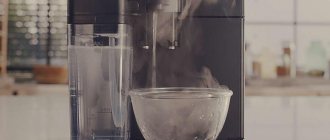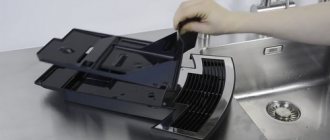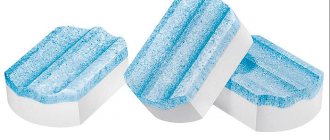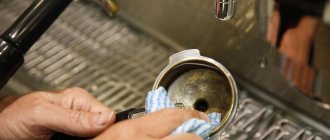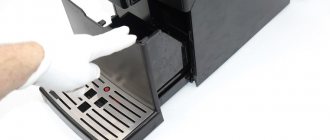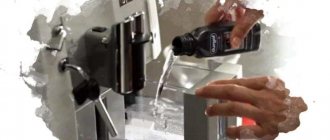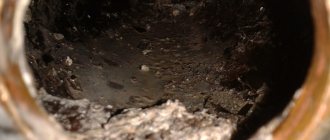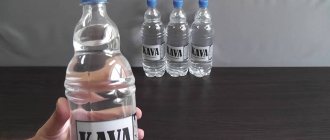Gardening » Citrus » Lemon
1
1017
Article rating
Kira Stoletova
Home appliances and appliances last for many years if their owners take care of their condition. An important step for kitchen and bathroom assistants is to clean them regularly. Home remedies are often used for this, among which the most popular and versatile is citric acid.
Cleaning household items with citric acid
Features of citric acid
Citric acid is characterized by a rich chemical composition. It has many components that begin to actively react to the environment under certain conditions. It is a crystalline powdery substance of bright white color with a specific citrus aroma and a pronounced sour taste. More often in the food industry, citric acid is used in baking, cooking, canning, and in other areas. For house cleaning, monohydrate is used to clean household appliances, plumbing fixtures, carpet cleaning, etc.
This substance reacts actively with hot water when mixed with soda. It is able to fight limescale, dissolving it and crushing particles embedded in materials. But if you use a solution with too hot water over a long period of time, it can damage plastic parts and soft metal parts, corroding their top layer. It is also used to remove greasy stains, taking advantage of its ability to break down fat molecules and remove them from surfaces. The product is often used in combination with soda and vinegar.
Cleaning devices and internal parts of equipment with monohydrate should be safe for the skin of your hands. Therefore, it is mandatory to use rubber gloves.
Why does it work
Arina Piskareva
Laboratory employee, Department of Bioengineering, Moscow State University
Scale is mainly composed of calcium and magnesium carbonate. When interacting with citric, acetic, orthophosphoric or other acid, sparingly soluble carbonates of alkaline earth metals are converted into readily soluble salts. For example, acetates. Therefore, acidic substances are effective in the fight against scale, and to enhance the reaction they need to be heated.
Soda, when interacting with water, produces carbonic acid molecules, which, in turn, react with insoluble calcium and magnesium carbonates, turning them into soluble bicarbonates. And they are easily washed off with water and removed with a sponge.
Cleaning the washing machine
Systematic cleaning of the washing machine with citric acid will save you from rapid aging of equipment and rapid breakdown. Hard water, which is used when washing clothes, after some time leaves a large amount of salts that settle on the heating element and other important parts of the mechanism. Multilayer scale begins to wear out the machine and the washing process becomes ineffective.
Cleaning steps
To descale your washing machine with citric acid, take the powder itself and a small piece of dry and clean cloth. The process occurs in stages:
- check the drum for the absence of things in it, since citric acid can discolor the fabric by dissolving the paint;
- a machine with a washing capacity of up to 7-8 kg requires 90-100 g of powder, for smaller equipment (up to 4 kg) 50-60 g is enough;
- It is better to pour the monohydrate into the drum and into the powder tray;
- choose the longest possible mode with all the main processes - soaking, spinning, rinsing at a temperature of no more than 60°C;
- at the end of the washing process, check the condition of the drum cuff, where dirt and sediment may be found in the flap, which is wiped with a clean cloth;
- You should then clean the drain filter from any remaining large pieces of scale and dry the powder container.
It is permissible to clean the washing machine with citric acid up to 3 times a year with high water hardness. Softer water does not have such a devastating effect on the machine, so cleaning the washing machine with citric acid in this case is allowed about 2 times a year. The preventive measure is carried out after every 30th wash.
Advantages and Disadvantages of Acid Cleaning
To clean your washing machine with citric acid, buy this common and inexpensive product in any store. Its availability for every budget is a big plus. The beneficial components of the monohydrate act quickly and effectively, which is why it is chosen to combat the most difficult contaminants, which are scale of water salts on the heating element of a washing machine.
Citric acid for the washing machine acts as a conditioner. Deposits on the rubber part of the drum often acquire an unpleasant odor due to the proliferation of bacteria and harmful microorganisms in this place. The substances contained in lemon disinfect the drum cuff and give the entire inside of the machine a pleasant citrus aroma. The used citric acid is harmless to the body. After cleaning, use the washing machine without harming the laundry.
Acid disinfects the machine drum
Citric acid does not cause harm if used in certain doses and at a clearly designated temperature. It is possible to descale the washing machine with citric acid using hot water that does not exceed 60°C. A temperature regime that almost reaches a boil (90°C) together with a large amount of substance often leads to deformation of plastic and rubber parts of the mechanism, since the solution turns out to be caustic and aggressive. Cleaning a washing machine with citric acid in such conditions means dooming it to rapid breakdown.
Which washing mode to choose
The solvent properties of citric acid are enhanced by high temperature. Cleaning should be done in a washing mode up to +95℃. If there is little scale, then a temperature of +60℃ is sufficient. Such modes in automatic machines require a long cycle - up to three hours. If you need to set the time in your model yourself, set it to 2–3 hours.
To prevent the acid from damaging individual parts of the machine, you need to thoroughly clean all surfaces after treatment. Therefore, you need to set the double rinse mode and wipe the drum and rubber cuffs well so that no small grains of citric acid remain on them.
Cleaning the dishwasher
The dishwasher also has an element that heats the water. Salt scales appear over time on these parts of the mechanism, and grease accumulates inside the dishwasher itself. The properties and effectiveness of citric acid as a home remedy for cleaning this household appliance is highly effective.
To tidy up your dishwasher, you need to do the same as for cleaning a washing machine with citric acid:
- The detergent compartment is filled with one sachet of powder – 25 g;
- the washing mode is activated at maximum water temperature;
- upon completion of cleansing, restart another mode without adding any products - to rinse the machine;
- at the end of the entire process, clean the filter, wipe the entire cabin cavity with a damp, clean cloth, including the seals and door.
Microwave cleaning
The use of this table additive as a solvent for greasy stains inside the microwave oven is also popular. To do this, take powder or cut citrus fruits - this makes it easier to release chemically active elements. They use citric acid to wash the machine for heating and cooking food, with some differences from previous methods.
Internal cleaning rules
One sachet of powder (25 g) is diluted with a glass of cold water and placed in a heat-resistant container. It is important that the solution occupies no more than half the container, otherwise it will spill and fall on the elements of the device. The dishes are placed in the microwave and the appropriate mode is set, in which it will be possible to boil the product for 5 minutes without stopping. Steam, saturated with citrus enzymes, will dissolve fatty deposits on the walls of the device. If necessary, in case of heavy contamination, repeat the procedure.
After the program ends, the door is not opened, leaving the inside exposed to steam. While the oven is cooling down and the fat is steaming inside it, it is better to disconnect it from the electrical network. After complete cooling, wipe the chamber with a sponge and foamed detergent. It is better to have enough foam to remove greasy stains. The washed oven is wiped dry at the end with paper towels to get rid of stains and remaining dirt.
External cleaning of the microwave
The surface of the microwave oven is also often contaminated with drops of fat and food. Lemon juice from a fruit cut in half will come to the rescue. Another effective method is to wipe the outer casing with specially prepared water (a weak solution of citric acid, into which you can add 1 teaspoon of soda for greater effect). The solution is left for an hour so that it has time to dissolve the fat and act effectively against dirt.
Wash off any remaining solution and grease using a sponge soaked in detergent. Then the surfaces are wiped with clean water and wiped dry with paper napkins. After the process is complete, a subtle citrus aroma will remain.
Reviews
Catherine:
My grandmother taught me how to clean a kettle from plaque with citric acid. Everything sparkled on her, despite the fact that the water was hard, and whitish stripes immediately remained everywhere in the ladle, on the walls of the tank. She did not delay the cleaning and often boiled water with acid powder. I adopted the method, it turns out cheap and effective. I use it in a plastic teapot and take a small amount of powder. I boil it and then wipe it with a cloth.
Ivan:
A good way to clean a kettle, or any other utensils. Eats away all the layers. If they are old, then you need to hold the solution longer or boil it again. I also pour the solution into enamel pans if the deposit is small. I haven’t encountered severe scale, I try not to let it get to that point. I usually do prophylaxis once a month, and everything is fine.
It’s easy to clean even the oldest scale if you have citric acid on hand. It is enough to make the solution in the required proportion, follow the steps consistently, and the kettle will regain its former luster and cleanliness.
Cleaning the kettle and coffee maker from scale
Citric acid is safe for humans
When boiling hard water, limescale deposits on the walls of the kettle. To get rid of this problem, pour 5 tablespoons into the cavity of the device. food monohydrate, pour warm water up to the sediment level and leave for several hours. Next, rinse the electric kettle with running water. If you start to boil the reagent, the consequences can be disastrous - the coating of the kettle will deteriorate. The acid itself is safe for humans, so after cleaning, simply boiling clean water will be sufficient.
The coffee maker is also susceptible to salt precipitation from hard water during boiling. Therefore, to clean it, pour a solution of 1 tsp into the water compartment. acids with liquid. Next, start the normal coffee brewing process, allowing water to flow through the coffee holes. Then boil clean water for rinsing. Caring for your coffee maker includes regular cleaning every 2-3 months.
Prevention
The use of citric acid is indicated not only for cleaning dishes, but also for preventive purposes. Regular washing of the kettle “saves” from radical methods with vinegar and soda, helps maintain the integrity of the coatings on the walls and bottom, and ensures a long service life of the device.
It is enough to fill the kettle with water with dissolved citric acid powder 1-2 times a month, keeping the mixture for about 30-40 minutes.
The following preventive measures will help prevent scale formation:
- use only filtered or bottled water;
- regularly rinsing the kettle after boiling;
- removing light plaque from the walls.
It is advisable not to leave water in the kettle, drain the liquid completely, and before use it is recommended to pour a new one each time.
Plumbing cleaning
Unpleasant white deposits on shiny plumbing fixtures and surfaces and lime deposits in taps and mixers are a significant problem for housewives. You can get rid of it using various solvents, but the safest and most effective among home remedies is food monohydrate. It is used in a similar way as for kitchen appliances:
- To clean the taps, prepare a solution, the ratio of the components is 2 tbsp. for 1 glass of water. Soak paper towels or cotton cloth with it, wrap the material over the entire length of the faucet and leave for 2-3 hours. Afterwards, wipe with a sponge and detergent; for particularly dirty areas, use a small brush and rinse with cool water. To get rid of lime deposits inside the taps, tie a bag filled with lemon water to it, immersing the spouts in the solution. After a few hours, the inside is cleaned with a brush.
- A shower nozzle clogged with sediment can also be cleaned with a solution of citric acid in water at a concentration of 1:1. Dip the shower head into a container with this liquid for 2-3 hours, then rinse with running water. Often a large number of bacteria accumulate in the sprinkler, so it is better to carry out this procedure every 6 months.
- The toilet bowl is cleaned with a concentrated solution of citric acid. Leave the liquid over the entire surface; place paper towels with the solution in the most contaminated areas. After a few hours, the toilet is cleaned with a brush, adding soda for greater effectiveness.
- We clean tiles, shower stalls, and bathtubs. Their processing includes the use of monohydrate, diluted with water in proportions of 3 tbsp. for 1 l. water. For convenience, the solution is poured into a container with a spray bottle, sometimes adding 1 tsp. baking soda. Wipe surfaces with a sponge.
Can it be cleaned?
You can clean the kettle with citric acid. The layer that forms inside is salt deposits. They no longer dissolve in ordinary water. To destroy their hard shell, exposure to more aggressive substances is necessary.
Citric acid is the most accessible, safe and inexpensive remedy that helps to quickly cope with the problem. You can clean the kettle with lemon. It does not harm its walls, does not cause them corrosion or oxidation.
The preservative works exclusively on the surface, dissolving solid deposits. In the future, you can use such a device without danger to your health.
Cleaning the car cooling system
It is recommended to clean the car engine cooling system before each antifreeze change. This action gets rid of unwanted dirt, dust, and deposits from the cooling channels and surfaces of other parts; this is an excellent prevention of corrosion (this includes rust).
Citric acid is an ideal safe cleaner because it does not harm the skin or respiratory tract, and when used correctly, does not harm parts made of materials such as plastic, rubber, or soft metal. It is safe to clean a radiator made of any material to control its heating.
For cleansing, using 70-80 g of powder per 5 liters is sufficient. water. But in case of severe contamination, you will have to repeat the action several times.
Tips for cleaning your car's cooling system:
- use only distilled or cooled boiling water;
- First, the monohydrate is poured into a saucepan with ½ liter of liquid, boiled until completely dissolved, then the rest of the water is added;
- after removing the antifreeze, pour flushing into the heat exchanger, start the engine and warm it up to operating condition for 10-15 minutes;
- after turning off the engine, drain the cleaning solution and evaluate its color and consistency;
- The cleaning ends if the solution comes out clean, all that remains is to rinse with distilled water another 2-4 times.
How often is flushing required?
Many popular manufacturers of gas boilers such as Navien, Baxi, Ariston, Vaillant indicate the frequency of flushing the heat exchanger in their operating instructions. However, real operating conditions often make their own adjustments. The practice of connecting gas boilers to a heating system with hard water shows that the heat exchanger should be flushed every season. To avoid this problem in the middle of a cold winter, it is recommended to flush immediately after or before the start of the heating season. The following are characteristic signs that indicate that the heat exchanger of your gas boiler needs cleaning:
Gas consumption has increased
The resulting scale reduces the thermal conductivity of the heat exchanger, thereby forcing the gas boiler to burn more fuel to achieve the set temperature.
Burner always on
An increase in burner operating time may also indicate the presence of scale preventing normal heating of the coolant.
Rumble and interruptions in the operation of the circulation pump
Reducing the effective diameter of the heat exchanger channels makes it difficult to pump the coolant to the circulation pump. Its operation in maximum mode may be accompanied by hum and interruptions in operation.
Reduced pressure in the DHW circuit
A sign of the presence of a layer of scale in the secondary circuit of a double-circuit boiler can be a decrease in pressure in the hot water supply line.
If one or more of the above signs can be observed in the operation of your gas boiler, it is necessary to urgently flush it in order to avoid breakdowns of expensive heating system components and high costs for their repair or replacement.
Return to contents
